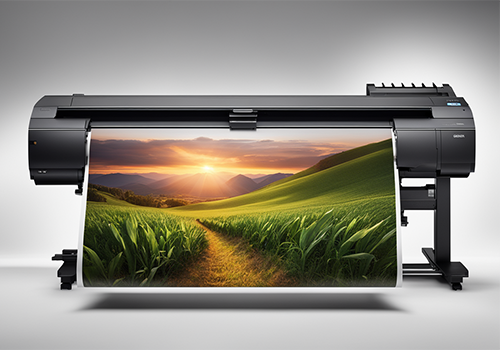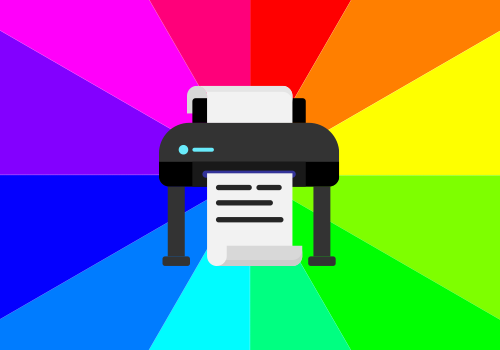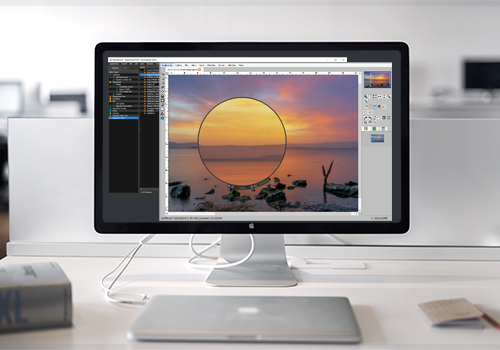How RIP Software Can Improve Your Print Workflow
In the fast-paced world of printing, efficiency, quality, and accuracy are paramount. While 'RIP Software' might not be a household name, its role in print workflow is indispensable.
RIP, short for Raster Image Processor, acts as the bridge between your digital files and the tangible output on paper or other media. But what makes this software pivotal? In essence, it serves as a translator, converting complex vector-based data from your digital designs into a format your printer understands: rasterised images.
Serendipity's Blackmagic and Megarip stand out as excellent examples of colour-managed RIP software, crafted specifically for this purpose.
Understanding RIP Software
RIP software serves as the crucial link between your digital designs and physical prints. Its primary role is to translate vector-based files, often in formats like PDF or EPS, into rasterised images composed of tiny dots or pixels that printers can accurately reproduce. This seamless conversion sets the stage for high-quality, detailed prints. Moreover, it optimises the printing process, ensuring precise ink or toner placement. This not only enhances print quality but also boosts overall workflow efficiency.

Beyond basic file conversion, RIP software offers advanced features, including:
Colour Management: Achieve accurate and consistent colour reproduction across various print jobs.
Printer Compatibility: Tailored to work seamlessly with specific printer models, optimising output based on their capabilities.
Print Queues: Manages print queues, prioritises jobs, and nests multiple print jobs on a single sheet to reduce waste and enhance efficiency.
Efficiency is paramount in successful print workflows, and RIP software excels in this regard. Without it, complex designs from vector files can lead to slow print times and quality issues due to data processing overload. In contrast, RIP software pre-processes data into manageable portions, accelerating printing and minimising errors.
Additionally, the software makes intelligent decisions about colour management, ensuring on-screen colours closely match the final print. This precision reduces the need for test prints and adjustments, saving time and resources.
The Importance of Colour Management
Colour in printing is a scientific endeavour, not a subjective one. Businesses heavily rely on accurate colour matching to ensure brand consistency across diverse marketing materials. Consider the importance of a fast-food chain accurately reproducing its iconic red and yellow colours on every poster and packaging. Industries such as photography, fashion, and design also depend on faithful colour reproduction to effectively convey their messages.
Yet, achieving consistent colour output in printing poses several challenges:
- Device Variability: Even printers of the same model may produce slight colour variations, making it crucial to address.
- Substrate Variation: The type of paper or material used can significantly impact colour output, especially concerning ink absorption on coated and uncoated papers.
- Environmental Factors: Factors like temperature and humidity can influence colour output, particularly noticeable in large-format printing where ink drying times are critical.
- Colour Profiles: Design files don't always include accurate colour profiles, leading to discrepancies between design intent and actual output.
RIP software offers a solution to these colour management challenges through:
- Colour Calibration: Advanced colour calibration tools compensate for device and substrate variations, ensuring what you see on your screen closely matches the printout.
- Colour Profiles: RIP software can apply precise colour profiles, bridging the gap between your design vision and the actual output, ensuring consistency across different printing devices and materials.
- Spot Colour Matching: In cases where specific colours must be replicated precisely (e.g., corporate logos or branding), the software excels in matching spot colours accurately, maintaining brand integrity.
- Soft Proofing: RIP software often includes soft proofing capabilities, enabling you to preview how your design will appear in print, helping catch discrepancies before printing.
In essence, RIP software serves as a guardian of colour fidelity in your print workflow, ensuring that your screen's vision translates faithfully onto your printed materials.
Streamlining Your Workflow with RIP Software
Efficiency is a game-changer in the print industry, and RIP software is your key to faster processing, consistent quality, and streamlined colour management.

In the printing world, time is money. RIP software reduces delays by pre-processing complex files, making printing faster. For large or high-volume jobs, this translates to significant time savings. It also manages multiple print jobs simultaneously, minimising downtime and maximising productivity.
Inconsistencies in print quality can be challenging, but RIP software delivers unparalleled control and precision. It optimises ink distribution, resolution, and colour accuracy, ensuring that your prints align perfectly with your design intent.
Effective colour management is crucial for brand consistency. The software generates precise colour profiles, eliminating the need for endless adjustments and test prints. Moreover, it excels in spot-on colour matching, making it vital for businesses with specific branding colours or product shades.
RIP software streamlines your print workflow by reducing processing times, improving print quality, and simplifying colour management. It's a must-have for businesses aiming to enhance their printing processes.
Sample Scenarios
These examples illustrate how businesses across different industries can harness the power of RIP software to achieve remarkable results.
Commercial Printers:
Consider a bustling commercial printing company faced with a relentless demand for high-quality prints. Without RIP software, meeting tight deadlines and maintaining colour consistency can be daunting.
By implementing RIP software, this commercial printer could significantly reduce print processing times. Complex print jobs that once took hours are completed in a fraction of the time. The result? Satisfied customers with quicker turnaround times and the ability to take on more projects without compromising on quality.
Large-Format Printing Studios:
Large-format printing shops cater to diverse clientele, each with unique requirements. Ensuring colour accuracy and print quality across a variety of substrates is a considerable challenge. Whether printing banners, posters, or vehicle wraps, the software's precise colour management ensures that each print matches the desired colour profile. This not only enhances customer satisfaction but also reduces material wastage and reprints.
Professional Photographers:
For professional photographers, achieving accurate colour reproduction is paramount. Clients expect their cherished memories to be captured and printed with the utmost precision.
RIP software ensures that every print of a treasured photograph retains the subtleties of colour and detail captured by the camera. The software's advanced colour management capabilities allowed for consistent and faithful reproduction of skin tones, landscapes, and intricate details. This level of precision not only delights clients but also bolsters the photographer's reputation for delivering exceptional quality.
Packaging Printers:
Packaging serves as a critical visual representation of a brand's identity, and any inconsistency can lead to a negative impression on consumers. Ensuring vibrant and consistent colours, intricate design details, and flawless print quality is essential.
RIP software enables packaging printers to maintain colour consistency across various materials and substrates, whether they are producing labels, cartons, or flexible packaging. This precision is crucial for meeting the stringent quality standards and regulatory requirements of the packaging industry, where even the slightest deviation in colour or design can result in rejected batches and costly reprints. Packaging printers can enhance their efficiency, and reduce waste.
Invest in Success
If you've yet to embrace RIP software in your print workflow, now is the time to take action. Its benefits extend far beyond mere efficiency and quality; they encompass the very essence of your business's success in a fiercely competitive market.
As a commercial printing company, you can surge ahead of your rivals by delivering projects with remarkable speed, all while maintaining impeccable quality. Large-format printing shops have the opportunity to leave customers awestruck with consistently vibrant prints that demand attention. For professional photographers, it's the chance to elevate your craft to new heights, ensuring each image is faithfully and breathtakingly reproduced.
In adopting RIP software, businesses are not merely acquiring a tool; they are investing in efficiency, quality, and their reputation. It's a transformative addition to any print workflow, empowering businesses to thrive in a competitive landscape.



